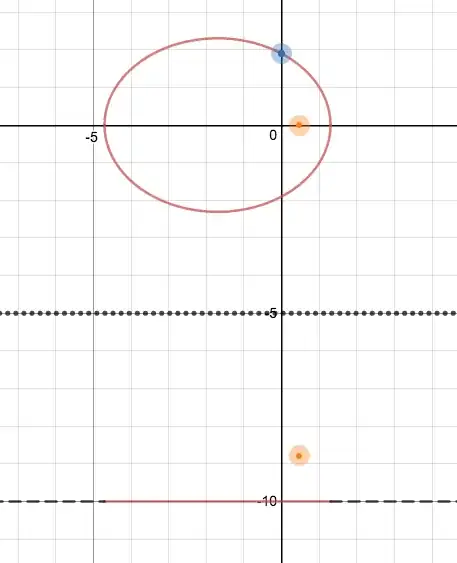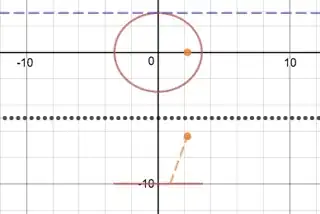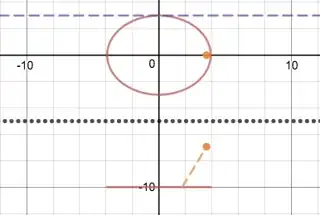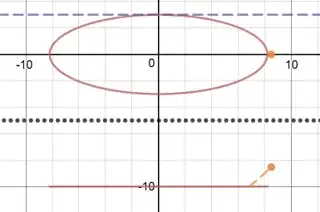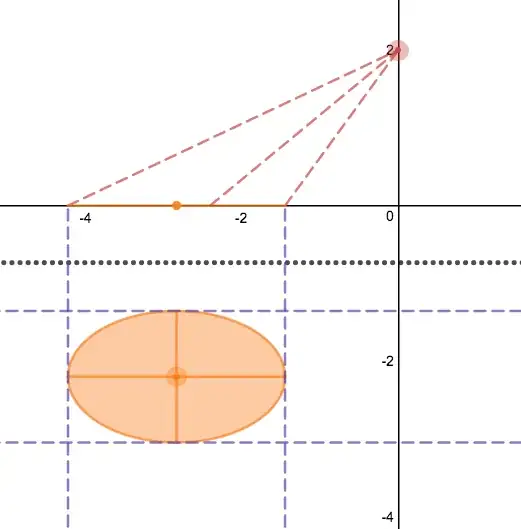A light source with a right circular conical beam is placed at a height $h$ above the origin of the Cartesian $x$-$y$ plane (i.e. positioned at $(0,0,h)$), and directed vertically downwards. The resultant image on the Cartesian plane a circle with radius $b$ centred on the origin, i.e. $x^2+y^2=b^2$.
Now we want to move the light source along the positive $x$-axis, such that it is above $(k,0)$, but at height $z$ (i.e. positioned at $(k,0,z)$), and angle of incidence, $\alpha$, from the vertical such that the resultant image on the Cartesian plan is an ellipse centred on the origin with semi-minor axis $b$ and semi-major axis $a$ ($a>b$), i.e. $\frac {x^2}{a^2}+\frac{y^2}{b^2}=1$.
What are the values for the horizontal displacement $k$, height $z$ and angle of incidence $\alpha$ required to created the ellipse? (i.e. express $k$, $z$ and $\alpha$ in terms of $h, a, b$)
Here's a nice video on youtube by ElicaTeam illustrating something similar to the above. Here's a screenshot from the video.
Addendum
After further reflection, it may not be possible to find a solution under the given constraints. Whilst it may be possible to rotate the light source about $O$ such that the distance from $(0,\pm b)$ is always the same, the resultant ellipse will not be centred on $O$, and $(0,\pm b)$ will no longer be the vertices of the semi-minor axis of the ellipse.
See simulation (plan view and side view) here.
For the required ellipse, perhaps a cone with a different aperture (or semi-vertical angle) is required.
Comments welcome.
Addendum II
If we assume that the light cone aperture is fixed, then it is possible to create an ellipse-shaped "spotlight" centered on $O$, with semi-minor axis $b$ (specified) but with varying semi-major axis $a$, by changing the angle of tilt $\alpha$, the $x$-axis displacment $k$, and the $z$-axis displacement $z$.
See illustration here and screenshots below.
Addendum III (27 Jul 2017)*
Per desmos implementation here it is NOT possible to obtain an origin-centred ellipse with semi-minor radius $b$, if the height of the light source remains the same. The blue curve is the locus of the light source for constant $b$.
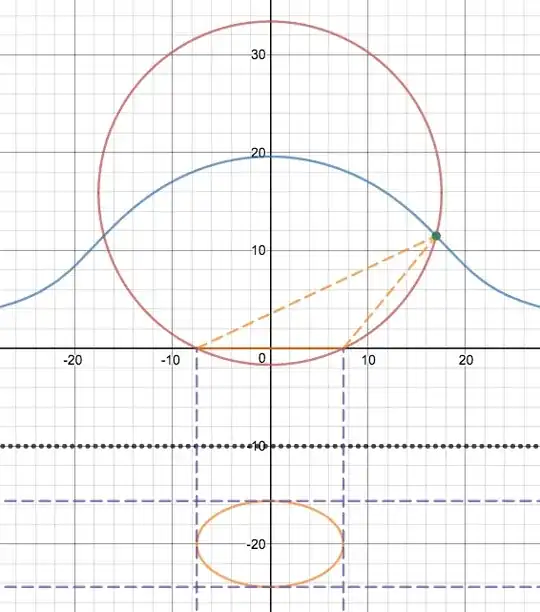
See also desmos implementation here which allows the resultant ellipse (not necessarily origin-centred) by varying light source position, beam angle and tilt angle.

